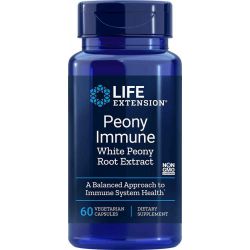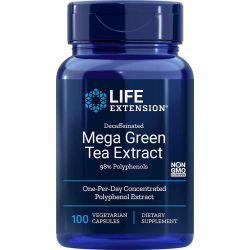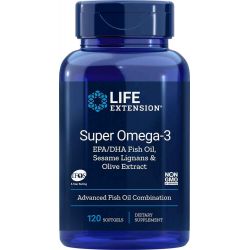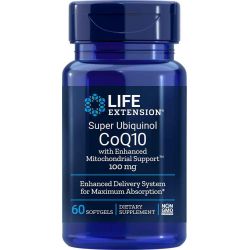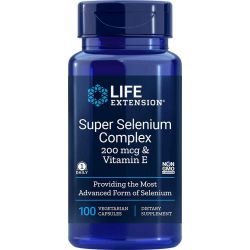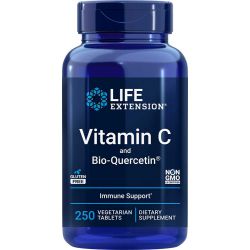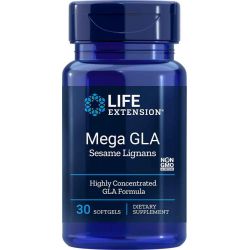Autoimmune Diseases part 1
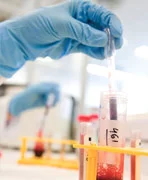 Autoimmune diseases are characterized by the body's immune responses being directed against its own tissues, causing prolonged inflammation and subsequent tissue destruction. Autoimmune disorders can either cause immune-responsive cells to attack the linings of the joints (resulting in rheumatoid arthritis) or trigger immune cells to attack the insulin-producing islet cells of the pancreas (leading to insulin-dependent diabetes mellitus).
Autoimmune diseases are characterized by the body's immune responses being directed against its own tissues, causing prolonged inflammation and subsequent tissue destruction. Autoimmune disorders can either cause immune-responsive cells to attack the linings of the joints (resulting in rheumatoid arthritis) or trigger immune cells to attack the insulin-producing islet cells of the pancreas (leading to insulin-dependent diabetes mellitus).
A healthy immune system recognizes, identifies, remembers, attacks, and destroys bacteria, viruses, fungi, parasites, cancer cells, or any health-damaging agents not normally present in the body. A defective immune system, on the other hand, wreaks havoc throughout the host by directing antibodies against its own tissues.
Any disease in which cytotoxic cells are directed against self-antigens in the body's tissues is considered autoimmune in nature. Such diseases include, but are not limited to, celiac disease, Crohn's disease, pancreatitis, systemic lupus erythematosus, Sjogren's syndrome, Hashimoto's thyroiditis, and other endocrinopathies. Allergies and multiple sclerosis are also the result of disordered immune functioning.
Aging
 Age is recognized as an important factor in the appearance of autoimmune disease. In a paper that appeared in The Lancet in 1992, investigators assessed the difference in physiological chemistry between healthy centenarians and unhealthy 60- and 70-year olds. The most striking difference was that the healthy centenarians had very low levels of autoantibodies to their thyroid, adrenal, pituitary, hypothalamus (Mariotti 1992). This has led some people to speculate that autoimmunity is the result of environmental exposure to foreign substances. Thus, the immune system may also be suppressed or weakened as a result of lifestyle factors (ie, intake of alcohol, caffeine, tobacco, drugs, sugar, poor diet, and lack of sleep) not associated with a degenerative disease. These lifestyle factors can have a substantial effect on the trends of autoimmune diseases.
Age is recognized as an important factor in the appearance of autoimmune disease. In a paper that appeared in The Lancet in 1992, investigators assessed the difference in physiological chemistry between healthy centenarians and unhealthy 60- and 70-year olds. The most striking difference was that the healthy centenarians had very low levels of autoantibodies to their thyroid, adrenal, pituitary, hypothalamus (Mariotti 1992). This has led some people to speculate that autoimmunity is the result of environmental exposure to foreign substances. Thus, the immune system may also be suppressed or weakened as a result of lifestyle factors (ie, intake of alcohol, caffeine, tobacco, drugs, sugar, poor diet, and lack of sleep) not associated with a degenerative disease. These lifestyle factors can have a substantial effect on the trends of autoimmune diseases.
As we age, our autoimmune system declines in its effectiveness due in large part to oxidative damage caused by the recurrent presence of significant amounts of free radicals. In addition, proteins can become glycated, that is, a sugar molecule is attached to the protein. The accumulation of these glycated proteins in the body affects the immune system because the immune system sees them as altered proteins with different structure and function (Monboisse 2000; Sasaki 2001; Collison 2002). Regarding these substances as foreign, the immune system develops antibodies against them. The possibility of becoming allergic to oneself, with the associated autoimmunity and inflammation, increases as one accumulates these damaged glycated proteins.
The body is made up largely of proteins, so its health depends upon its freedom from damage (as through oxidation or glycation) as well as its timely removal as part of normal protein turnover. The body's antioxidant system and other lines of defense cannot completely protect proteins. Nature's second line of defense is the body's system for repairing or removing damaged proteins. While some protein repair mechanisms exist, it is difficult for the body to repair most protein damage. Yet, it is essential to efficiently remove aberrant and unneeded proteins to fully protect against autoimmune diseases.
Methods to protect against excessive protein glycation will be discussed later in this protocol.
Basic Pathways of Autoimmune Dysfunction
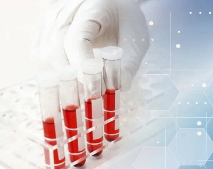 Autoimmune diseases tend to be viewed as separate entities. A broader perspective, however, may reveal that shared mechanisms are the cause of disease, rather than just its byproduct. If this perspective were applied, patients would benefit (before the development of irreversible tissue damage) from improved therapies and early intervention. Dr. Majid Ali has long considered that there must be a single initial common pathway to all disease, including immune dysfunction.
Autoimmune diseases tend to be viewed as separate entities. A broader perspective, however, may reveal that shared mechanisms are the cause of disease, rather than just its byproduct. If this perspective were applied, patients would benefit (before the development of irreversible tissue damage) from improved therapies and early intervention. Dr. Majid Ali has long considered that there must be a single initial common pathway to all disease, including immune dysfunction.
One consideration is the continued exposure to heavy metals and environmental pollution that overload the immune system. On a daily basis, we battle with pesticides, herbicides, chemical fertilizers, industrial wastes, cigarette smoke, and automobile exhaust. Our air, water, and food (in particular) are full of toxic substances. There is no doubt that these toxins play a role in immune dysfunction. Even substances considered by most people as safe impair immune function. Sugar consumption in all forms (glucose, fructose, and sucrose) will impair the ability of white cells to destroy biological agents. This effect begins within a half hour of consumption and lasts for 5 hours. After 2 hours, immune function is reduced by 50% (Sanchez 1973; Bernstein 1977).
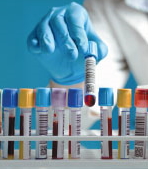 Oxidative stress plays a role in autoimmune diseases. It can be compared to a piece of metal rusting and results from the action of damaging molecules (ie, free radicals), which are a natural byproduct of the body's metabolism. The electrically charged free radicals attack healthy cells, causing them to lose their structure and function and eventually destroying them. Free radicals are not only produced by our bodies, but are also ingested from toxins and pollution in the air we breathe.
Oxidative stress plays a role in autoimmune diseases. It can be compared to a piece of metal rusting and results from the action of damaging molecules (ie, free radicals), which are a natural byproduct of the body's metabolism. The electrically charged free radicals attack healthy cells, causing them to lose their structure and function and eventually destroying them. Free radicals are not only produced by our bodies, but are also ingested from toxins and pollution in the air we breathe.
Chronic systemic inflammation is related to several autoimmune disorders, such as lupus, rheumatoid arthritis, Sjogren's syndrome, and fibromyalgia (see separate protocols on these topics). Inflammation can be traced to destructive cell-signaling chemicals known as cytokines, which contribute to many degenerative diseases (Brod 2000). In rheumatoid arthritis, excess levels of pro-inflammatory cytokines, such as tumor necrosis factor-alpha (TNF-α), interleukin-6 (IL-6), interleukin 1(b) (IL-1b), and/or leukotriene B4 (LTB4), are known to cause or contribute to the inflammatory syndrome that ultimately destroys joint cartilage and synovial fluid. Certain nutritional supplements and low-cost prescription medications will often lower cytokine levels and control the inflammatory state.
Nutritional Supplements to Improve Autoimmune Health
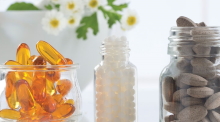 The autoimmune system needs a good nutritional foundation (over a long period of time) to alleviate or reverse lifestyle autoimmune dysfunction and assist with combating fully developed autoimmune diseases. The fundamental causal basis for autoimmune system boosting was shown in an early study designed to measure the serum concentrations of vitamin E, beta-carotene, and vitamin A in patients prior to developing rheumatoid arthritis or systemic lupus erythematosus. Two to 15 years after the volunteer patients had originally donated their blood to the serum bank (1974), the serum samples were assayed for vitamin E, beta-carotene, and vitamin A. Those patients who developed rheumatoid arthritis or lupus showed lower serum concentrations of vitamin E, beta-carotene, and vitamin A in 1974. Those with the lowest serum level of beta-carotene in 1974 were the most likely to develop rheumatoid arthritis later in life (Comstock 1997). This indicates the long-term importance of maintaining adequate vitamin status for the prevention of autoimmune diseases.
The autoimmune system needs a good nutritional foundation (over a long period of time) to alleviate or reverse lifestyle autoimmune dysfunction and assist with combating fully developed autoimmune diseases. The fundamental causal basis for autoimmune system boosting was shown in an early study designed to measure the serum concentrations of vitamin E, beta-carotene, and vitamin A in patients prior to developing rheumatoid arthritis or systemic lupus erythematosus. Two to 15 years after the volunteer patients had originally donated their blood to the serum bank (1974), the serum samples were assayed for vitamin E, beta-carotene, and vitamin A. Those patients who developed rheumatoid arthritis or lupus showed lower serum concentrations of vitamin E, beta-carotene, and vitamin A in 1974. Those with the lowest serum level of beta-carotene in 1974 were the most likely to develop rheumatoid arthritis later in life (Comstock 1997). This indicates the long-term importance of maintaining adequate vitamin status for the prevention of autoimmune diseases.
Slowing the Damage to Healthy Protein
Carnosine, a dipeptide amino acid found naturally in the body, helps slow the formation of glycated protein end products. Recall that glycated protein may be unrecognizable to the immune system, thereby triggering an autoimmune attack. Since the normal removal of damaged protein declines with aging, slowing the development of protein crosslinking (glycation) may help to reduce an autoimmune reaction. In addition to its antiglycation effects, carnosine has been found to modulate immune system neutrophils, thus suppressing a response (Tan 1998).
Reducing Inflammation
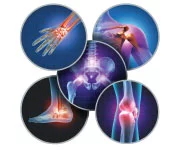 A study found that fish oil containing vitamin E delayed the onset of autoimmune diseases in autoimmune-prone mice (Venkatraman 1994). Another study on the effects of vitamin E deficiency found that dietary components that provide antioxidant effects may contribute to the treatment of inflammatory/autoimmune diseases (Amarakoon 1995).
A study found that fish oil containing vitamin E delayed the onset of autoimmune diseases in autoimmune-prone mice (Venkatraman 1994). Another study on the effects of vitamin E deficiency found that dietary components that provide antioxidant effects may contribute to the treatment of inflammatory/autoimmune diseases (Amarakoon 1995).
Supplementation with omega-3 essential fatty acids (EFAs) from fish, flaxseed, or perilla oils--along with borage oil, evening primrose oil, or black currant seed oil, which contain the essential omega-6 fatty acid gamma-linolenic acid (GLA)--can alleviate many symptoms of autoimmune disease through their anti-inflammatory activity. Docosahexaenoic acid (DHA) extracted from fish oil may be as effective as some prescription medications in reducing inflammation.
Dehydroepiandrosterone (DHEA) is a pro-steroidal hormone that decreases with age. Decreases in DHEA levels have been linked to a number of chronic and degenerative diseases including cancer, coronary artery disease, depression, stress disorders, and neurological functioning (Straub 1998). As a result of aging, immunity may become compromised due to dysregulation of cellular hormones (cytokines and growth factors) that govern immune response. Too much or too little of various cytokines produces disease states or compromised responses to various challenges.
 In aging animals, the addition of DHEA has normalized deranged cytokine levels, including the primary inflammatory factor interleukin-6 (IL-6) (Araghi-Niknam 1997). In the aged test animals, serum IL-6 was elevated nine-fold from normal. After administration of DHEA or dehydroepiandro-sterone-sulfate (DHEA-S), IL-6 dropped to within 15% of youthful levels. In the same studies, it was shown that antibodies directed toward oneself rose five-fold with aging, but fell by over 50% after 2 weeks on DHEA-S (Spencer 1996).
In aging animals, the addition of DHEA has normalized deranged cytokine levels, including the primary inflammatory factor interleukin-6 (IL-6) (Araghi-Niknam 1997). In the aged test animals, serum IL-6 was elevated nine-fold from normal. After administration of DHEA or dehydroepiandro-sterone-sulfate (DHEA-S), IL-6 dropped to within 15% of youthful levels. In the same studies, it was shown that antibodies directed toward oneself rose five-fold with aging, but fell by over 50% after 2 weeks on DHEA-S (Spencer 1996).
In a study of ten women with the autoimmune disease Sjogren's syndrome, all were shown to have decreased serum concentrations of DHEA-S and an increased cortisol/DHEA-S ratio compared with healthy controls (Valtysdottir 2001).
Rheumatoid arthritis is an autoimmune disorder in which the body attacks its own tissues as though they were foreign invaders. Boswellia may also offer relief to autoimmune-related rheumatoid arthritis patients. Boswellia can help reduce immune cells that encourage inflammation, while increasing the number of immune cells that inhibit inflammation (Chevrier 2005). Studies indicate that boswellia’s ability to modulate the immune system and inhibit inflammatory activity may help improve the symptoms of rheumatoid arthritis and other autoimmune conditions (Ammon 2006).
Lessening Free-Radical Damage
 Antioxidants are a broad group of compounds that destroy or neutralize free radicals in the body; thus, they protect against oxidative damage to cells caused by normal aging or daily exposure to pollutants and toxic substances. Antioxidants are found naturally in healthy food, especially fruits and vegetables. The most effective antioxidants include vitamin C, vitamin E, green tea extract, beta-carotene, grape seed-skin extract, coenzyme Q10 (CoQ10), and selenium.
Antioxidants are a broad group of compounds that destroy or neutralize free radicals in the body; thus, they protect against oxidative damage to cells caused by normal aging or daily exposure to pollutants and toxic substances. Antioxidants are found naturally in healthy food, especially fruits and vegetables. The most effective antioxidants include vitamin C, vitamin E, green tea extract, beta-carotene, grape seed-skin extract, coenzyme Q10 (CoQ10), and selenium.
- Vitamin C may be the most important water-soluble antioxidant, having the ability to scavenge both reactive oxygen and nitrogen radicals. In controlled studies, vitamin C has demonstrated antiatherogenic, anticarcinogenic, antihistaminic, and immunomodulatory benefits.
- Vitamin E is a fat-soluble, essential nutrient for humans. Increased risk for coronary artery disease, Alzheimer's disease, and cancer has been associated with vitamin E deficiency.
- Green tea belongs to the flavonoid family. Green tea catechins are potent free radical scavengers that have demonstrated anticarcinogenic, anti-inflammatory, antiatherogenic, and antimicrobial activity.
- Beta-carotene is a dietary precursor to vitamin A. Beta-carotene has demonstrated immunomodulatory effects in male non-smokers and increased lymphocyte counts in healthy male smokers. Beta-carotene's antioxidant activity may prevent oxidative damage to DNA and inhibit lipid peroxidation.
- Grapeseed-skin proanthocyanadins have demonstrated several antioxidant activities, including inhibiting the oxidation of damaging LDL cholesterol. Other research has shown tumor-protective, cardio-protective, and liver-protective benefits.
- CoQ10 has shown antioxidant activity within the mitochondria and cellular membrane. CoQ10 levels decline with aging and are strongly related to increased cardiovascular disease, especially congestive heart failure. Supplemental CoQ10 has shown usefulness in treating periodontal disease and boosting energy levels.
- Selenium is a trace mineral that is essential for healthy immune function. Selenium provides protection to immune cells from stress-induced oxidative damage and neutralizes the effects of some toxic metals. Low dietary intake of selenium is associated with cardiovascular disease and certain cancers.
Modulating the Immune System
 The immune system functions because of adequate amounts of circulating antibodies. Antibodies are proteins with a unique concave region (combining site) in which they can combine with foreign proteins (antigens). Antigens are most often surface molecules found on the membrane of invading or diseased cells. After the antigen and antibody combine, the new complex produces a number of changes that inactivate or kill the invading cell. This function is known as humoral or antibody-mediated immunity. Lymphocytes are the most numerous cells of the immune system and are responsible for antibody production. B-cells are lymphocytes that produce humoral immunity.
The immune system functions because of adequate amounts of circulating antibodies. Antibodies are proteins with a unique concave region (combining site) in which they can combine with foreign proteins (antigens). Antigens are most often surface molecules found on the membrane of invading or diseased cells. After the antigen and antibody combine, the new complex produces a number of changes that inactivate or kill the invading cell. This function is known as humoral or antibody-mediated immunity. Lymphocytes are the most numerous cells of the immune system and are responsible for antibody production. B-cells are lymphocytes that produce humoral immunity.
T-cells are lymphocytes formed in the thymus shortly before and after birth. When T-cells come into contact with foreign antigens, the antigen binds to protein on the surface of the T-cell, making it sensitized. Sensitized T-cells destroy invading pathogens by releasing a specific and toxic poison to the cells of bound antigens. T-cells can also indirectly destroy toxic invaders by releasing a substance that attracts macrophages to the area that will ingest and destroy (phagocytose) the pathogen. This function is known as cell-mediated immunity. T-cells regulate natural killer cell activity and the body's inflammatory response to disease.
Material used with permission of Life Extension. All rights reserved.
Amarakoon, A.M.T., Tappia, P.S., Grimble, R.F. Endotoxin induced production of interleukin-6 is enhanced by vitamin E deficiency and reduced by black tea extract. Inflamm. Res. 1995; 44(7): 301-5.
Ammon HP. Boswellic acids in chronic inflammatory diseases.Planta Med. 2006 Oct;72(12):1100-16.
Araghi-Niknam, M., Liang, B., Zhang, Z. et al. Modulation of immune dysfunction during murine leukaemia retrovirus infection of old mice by dehydroepiandrosteronesulphate (DHEAS). Immunology 1997 Mar; 90(3): 344-9.
Bernstein, J., Alpert, S., Nauss, K.M., Suskind, R. Depression of lymphocyte transformation following oral glucose ingestion.Clin. Res. 1977; 25(3): 534A.
Bouic, P.J., Etsebeth, S., Liebenberg, R.W. et al. beta-Sitosterol and beta-sitosterolglucoside stimulate human peripheral blood lymphocyte proliferation: implications for their use as an immunomodulatory vitamin combination. Int. J. Immunopharmacol. 1996 Dec; 18(12): 693-700.
Brod, S.A. Unregulated inflammation shortens human functional longevity. Inflamm. Res. 2000 Nov; 49(11): 561-70.
Chen JY, Wu HX, Chen Y, Zhang LL, Wang QT, Sun WY, Wei W. Paeoniflorin inhibits proliferation of fibroblast-like synoviocytes through suppressing G-protein-coupled receptor kinase 2. Planta medica. May 2012;78(7):665-671.
Chevrier MR, Ryan AE, Lee DY, et al. Boswelliacarterii extract inhibits TH1 cytokines and promotes TH2 cytokines in vitro. ClinDiagn Lab Immunol. 2005 May;12(5):575-80.
Collison, K.S., Parhar, R.S., Saleh, S.S. et al. RAGE-mediated neutrophil dysfunction is evoked by advanced glycation end products (AGEs). J. Leukoc. Biol. 2002 Mar; 71(3): 433-44.
Comstock, G.W., Burke, A.E., Hoffman, S.C. et al. Serum concentrations of alpha tocopherol, beta carotene, and retinol preceding the diagnosis of rheumatoid arthritis and systemic lupus erythematosus. Ann. Rheum. Dis. 1997 May; 56(5): 323-5.
Crocq, L., Bugard, P., Viaud, P. Fatigue Study Group inquiry into asthenia in general practice. Psychol. Med. 1978; 10: 1943-53 (in French).
Damanhouri LH. Vitamin D deficiency in Saudi patients with systemic lupus erythematosus. Saudi Med J. 2009 Oct;30(10):1291-5.
De Simone, C., Ferrari, M., Meli, D. et al. Reversibility by L-carnitine of immunosuppression induced by an emulsion of soya bean oil, glycerol and egg lecithin. Arzneimittelforschung 1982; 32(11): 1485-8 (in German).
Du JH, Dong BD. [Comparative study on clinical efficacy of using methotrexate singly or combined with total glucosides of Paeony in treating rheumatoid arthritis]. Zhongguo Zhong xi yi jie he za zhi Zhongguo Zhongxiyi jiehe zazhi = Chinese journal of integrated traditional and Western medicine / Zhongguo Zhong xi yi jie he xue hui, Zhongguo Zhong yi yan jiu yuan zhu ban. Jun 2005;25(6):540-542.
Flora, K., Hahn, M., Rosen, H., Benner, K. Milk thistle (Silybummarianum) for the therapy of liver disease. Am. J. Gastroenterol. 1998 Feb; 93(2): 139-43.
Gupta MB, Nath R, Srivastava N, et al. Anti-inflammatory and antipyretic activities of beta-sitosterol. Planta Med. 1980 Jun;39(2):157-63.
He DY, Dai SM. Anti-inflammatory and immunomodulatory effects of paeonia lactiflora pall., a traditional chinese herbal medicine. Frontiers in pharmacology. 2011;2:10.
Hughes, C.E. Prayer and healing.A case study. J. Holist. Nurs. 1997 Sep; 15(3): 318-24; discussion, 325-6.
Juneja, L.R. et al. L-theanine-a unique amino acid of green tea and its relaxation effect in humans. Trends Food Sci. Tech. 1999; 10: 199-204.
Kuhn, D. The effects of active and passive participation in musical activity on the immune system as measured by salivary immunoglobulin A (SIgA). J. Music Ther. 2002 Spring; 39(1): 30-9.
Lehrer, P., Feldman, J., Giardino, N. et al. Psychological aspects of asthma. J. Consult. Clin. Psychol. 2002 Jun; 70(3): 691-711.
Lemire, J.M., Immunomodulatory role of 1,25-dihydroxyvitamin D3. Journal of cellular biochemistry, 1992. 49(1): p. 26-31.
Lin J, Xiao L, Ouyang G, Shen Y, Huo R, Zhou Z, . . . Li N. Total glucosides of paeony inhibits Th1/Th17 cells via decreasing dendritic cells activation in rheumatoid arthritis. Cellular immunology. Dec 2012;280(2):156-163.
Long, L., Huntley, A., Ernst, E. Which complementary and alternative therapies benefit which conditions- A survey of the opinions of 223 professional organizations. Complement. Ther. Med. 2001 Sep; 9(3): 178-85.
Luper, S. A review of plants used in the treatment of liver disease. I. Altern. Med. Rev. 1998 Dec; 3(6): 410-21.
Mariotti, S., Sansoni, P., Barbesino, G. et al. Thyroid and other organ-specific autoantibodies in healthy centenarians. Lancet 1992 Jun 20; 339(8808): 1506-8.
Monboisse, J.C., Rittie, L., Lamfarraj, H. et al. In vitro glycoxidation alters the interactions between collagens and human polymorphonuclear leucocytes. Biochem. J. 2000 Sep 15; 350(Pt. 3): 777-83.
Pawelec G, Barnett Y, Forsey R, et al. T cells and aging, January 2002 update. Front Biosci. 2002 May 1;7:d1056
Pugliese, P.T., Jordan, K., Cederberg, H., Brohult, J.Some biological actions of alkylglycerols from shark liver oil. J. Altern. Complement. Med. 1998 Spring; 4(1): 87-99.
Ritterhouse, L.L., et al., Vitamin D deficiency is associated with an increased autoimmune response in healthy individuals and in patients with systemic lupus erythematosus. Annals of the rheumatic diseases, 2011. 70(9): p. 1569-74.
Sanchez, A., Reeser, J.L., Lau, H.S. et al. Role of sugars in human neutrophilic phagocytosis. Am. J. Clin. Nutr. 1973 Nov; 26(11): 1180-4.
Sasaki, N., Toki, S., Chowei, H. et al. Immunohistochemical distribution of the receptor for advanced glycation end products in neurons and astrocytes in Alzheimer’s disease. Brain Res. 2001 Jan 12; 888(2): 256-62.
Spencer, N.F., Norton, S.D., Harrison, L.L. et al. Dysregulation of IL-10 production with aging: possible linkage to the age-associated decline in DHEA and its sulfated derivative. Exp. Gerontol. 1996 May-Jun; 31(3): 393-408.
Straub, R.H., Konecna, L., Hrach, S. et al. Serum dehydroepiandrosterone (DHEA) and DHEA sulfate are negatively correlated with serum interleukin-6 (IL-6), and DHEA inhibits IL-6 secretion from mononuclear cells in man in vitro: possible link between endocrinosenescence and immunosenescence. J. Clin. Endocrinol.Metab. 1998 Jun; 83(6): 2012-7.
Tan, K.M., Candlish, J.K. Carnosine and anserine as modulators of neutrophil function.Clin. Lab. Haematol. 1998 Aug; 20(4): 239-44.
Toloza, S.M., et al., Vitamin D insufficiency in a large female SLE cohort. Lupus, 2010. 19(1): p. 13-9.
Valtysdottir, S.T., Wide, L., Hallgren, R. Low serum dehydroepiandrosterone sulfate in women with primary Sjogren’s syndrome as an isolated sign of impaired HPA axis function. J. Rheumatol. 2001 Jun; 28(6): 1259-65.
Vempati, R.P., Telles, S. Yoga-based guided relaxation reduces sympathetic activity judged from baseline levels. Psychol. Rep. 2002 Apr; 90(2): 487-94.
Venkatraman, J.T., Chandrasekar, B. et al. Effects of n-3 and n-6 fatty acids on the activities and expression of hepatic antioxidant enzymes in autoimmune-prone NZBxNZW F1 mice. LIPIDS 1994; 29(8): 561-8.
Wang SL, Wang JP, Bian H. [Clinical observation on total glucosides of paeony combined with sulfasalazine in treatment of ankylosing spondylitis]. Zhongguo Zhong xi yi jie he za zhi Zhongguo Zhongxiyi jiehe zazhi = Chinese journal of integrated traditional and Western medicine / Zhongguo Zhong xi yi jie he xue hui, Zhongguo Zhong yi yan jiu yuan zhu ban. Mar 2007;27(3):217-219.
Wang Y, Xing HY. [Clinical observation on effect of total glucosides of paeony combined with methotrexate on rheumatoid arthritis]. Zhongguo Zhong xi yi jie he za zhi Zhongguo Zhongxiyi jiehe zazhi = Chinese journal of integrated traditional and Western medicine / Zhongguo Zhong xi yi jie he xue hui, Zhongguo Zhong yi yan jiu yuan zhu ban. Sep 2007;27(9):839-840.
Wang YN, Zhang Y, Wang Y, Zhu DX, Xu LQ, Fang H, Wu W. The Beneficial Effect of Total Glucosides of Paeony on Psoriatic Arthritis Links to Circulating Tregs and Th1 Cell Function. Phytotherapy research : PTR. Apr 23 2013.
Zhang HF, Xiao WG, Hou P. [Clinical study of total glucosides of paeony in patients with systemic lupus erythematosus]. Zhongguo Zhong xi yi jie he za zhi Zhongguo Zhongxiyi jiehe zazhi = Chinese journal of integrated traditional and Western medicine / Zhongguo Zhong xi yi jie he xue hui, Zhongguo Zhong yi yan jiu yuan zhu ban. Apr 2011;31(4):476-479.
Zhou Z, Lin J, Huo R, Huang W, Zhang J, Wang L, . . . Li N. Total glucosides of paeony attenuated functional maturation of dendritic cells via blocking TLR4/5 signaling in vivo. International immunopharmacology. Nov 2012;14(3):275-282.

